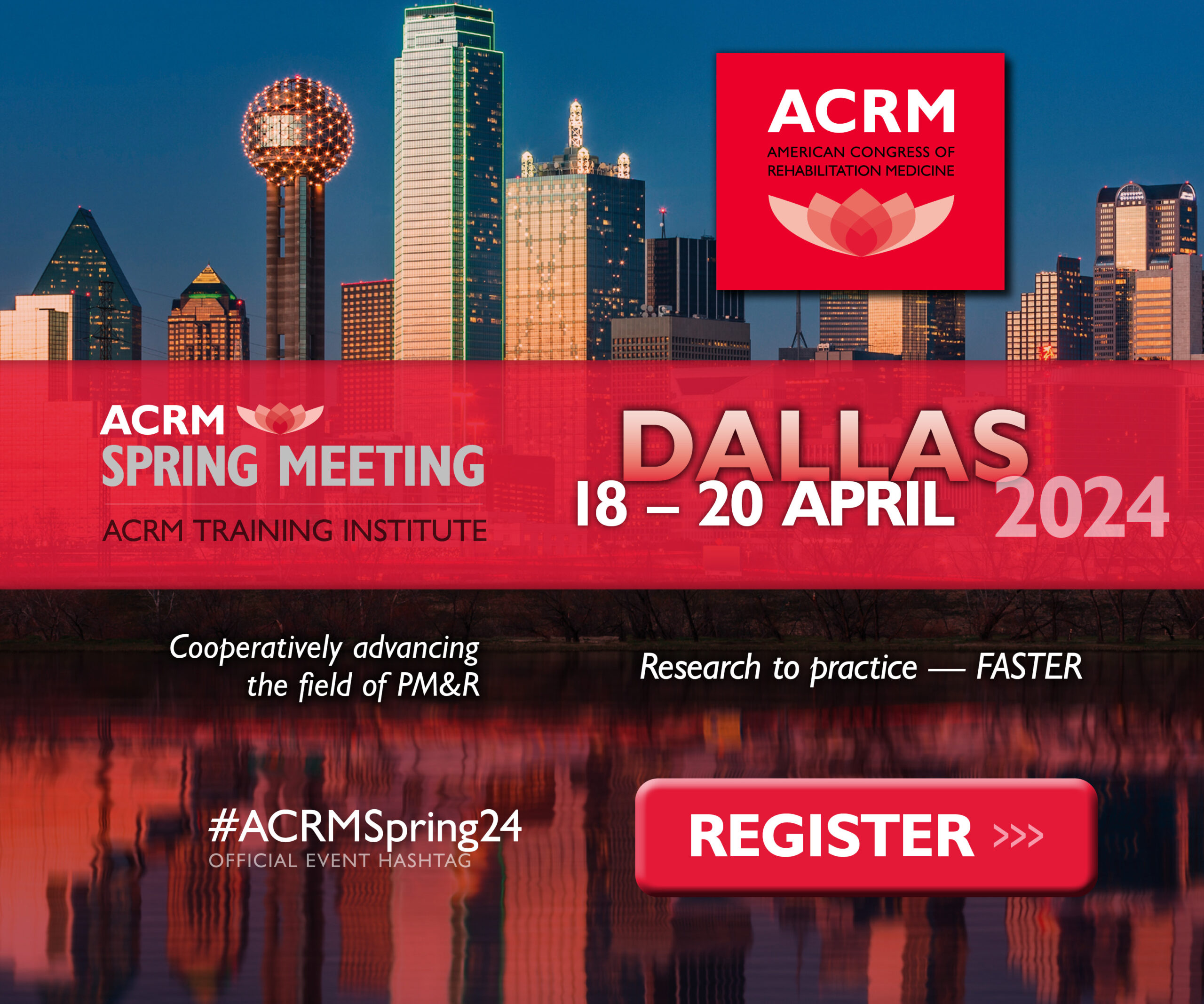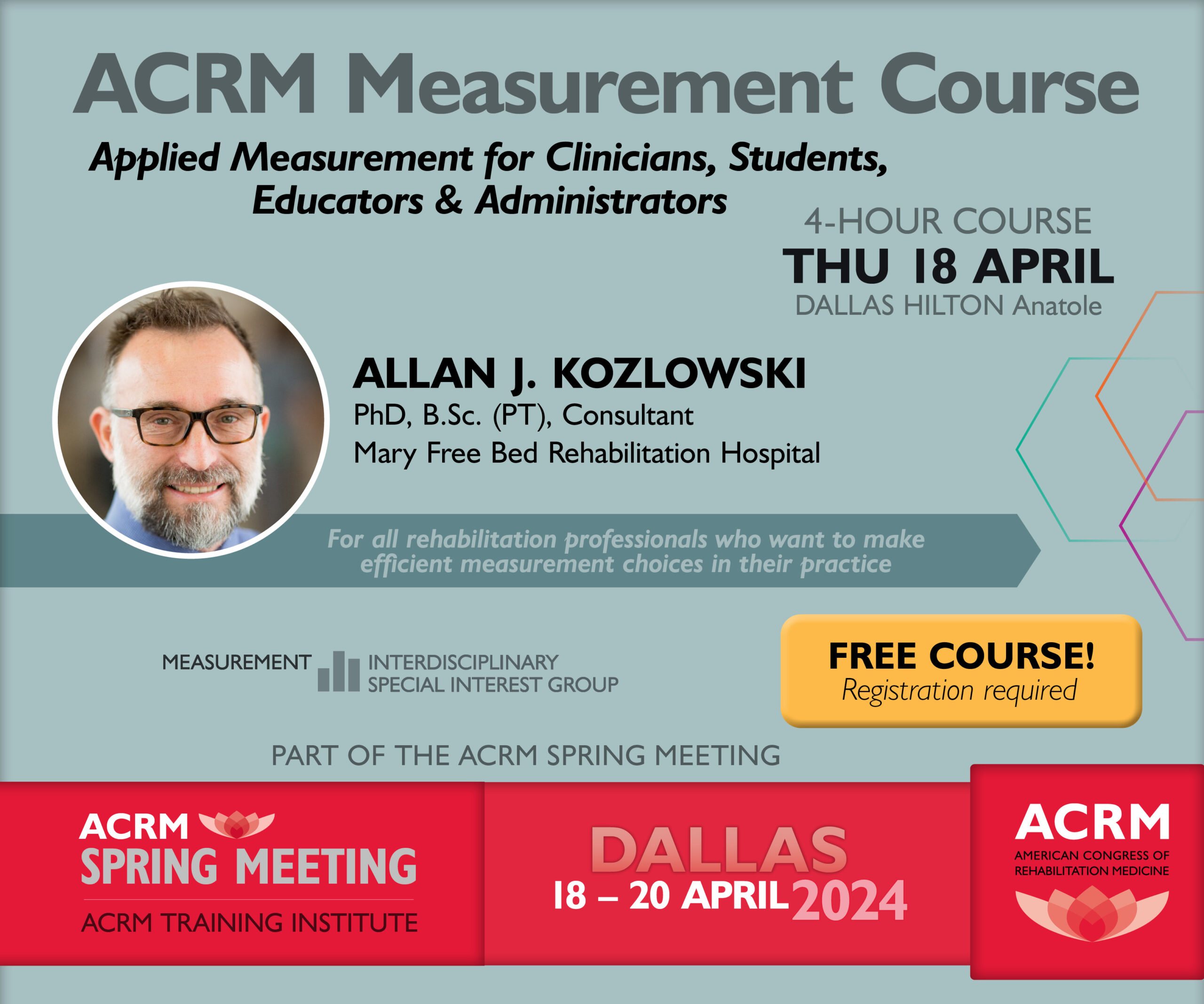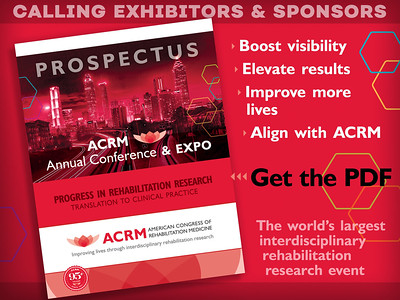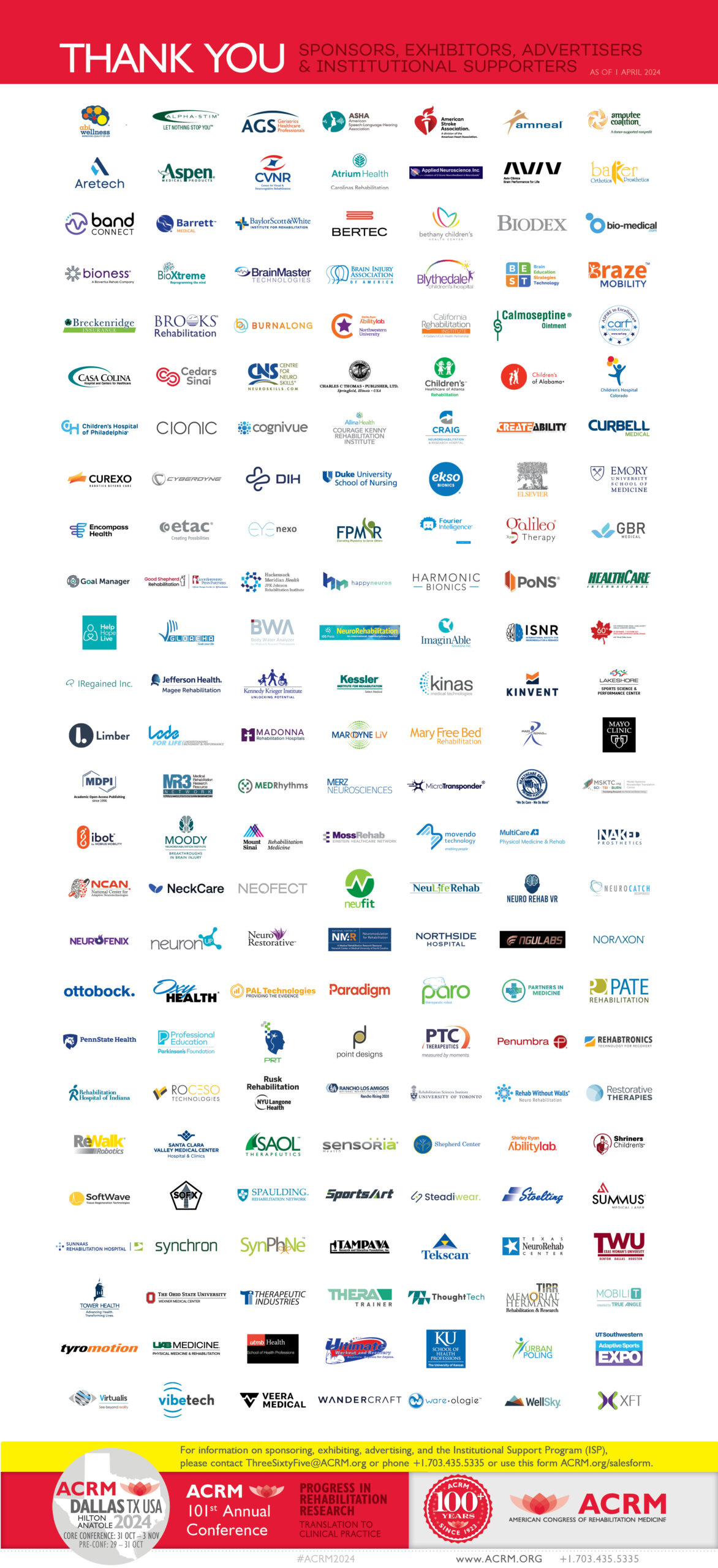Submitted by: Brad Kurowski, MD, MS, Cincinnati Children’s Hospital Medical Center; Arshia Ahmad, MSc, MD, MRCP, Indiana University-Purdue University Indianapolis; Jessica Colyer, MD, University of Cincinnati College of Medicine and Andrew Dennison, MD, Shepherd Center
Background
Collaboration among clinicians and researchers is essential to the advancement of the science of healthcare. Among the many healthcare fields, rehabilitation is particularly collaborative in that it is inherently multidisciplinary and combines expertise from individuals with a variety of backgrounds and educational experience.
Within the field of rehabilitation, clinical research often requires a healthy working relationship between clinicians and non-clinician researchers across various disciplines to make substantial advances in the field. While many clinicians express a desire to contribute to research within their field, successful clinician involvement in research initiatives can be derailed by a number of barriers.
In the spirit of the core mission of the American Congress of Rehabilitation Medicine (ACRM) to promote research and share information to enhance the lives of people living with disabilities through a multidisciplinary approach, the Early Career Physician’s Task Force sought advice from senior physician ACRM members on how to be successful as a clinician with research interests.
The task force developed key questions that were of interest to the group. Responses were aggregated and key themes were summarized. Overall, the senior members surveyed believe that clinicians can overcome these barriers to effective participation in research, but mindful preparation and consistent, dedicated effort are required. We hope that the responses to these questions are helpful tidbits that can guide future clinicians in the field of rehabilitation to develop successful careers.
Responses
How do you stay up-to-date with and integrate/translate evidence based medicine into your clinical practice? Are there particular systems or processes you use (e.g., Pubmed searches, reading journals, attending conferences, utilization of trainees, etc)?
The majority of our respondents reported that participation in education and lectures is a great way to stay up-to-date on the literature and integrate evidence based knowledge into one’s practice. However, more complex changes in practice require concerted effort over time and often necessitate a change in systems to fully implement.
A key theme across answers to this question and other questions was the importance of time management; one respondent suggested bringing a few articles on trips or to conferences to read during downtime as a way to stay abreast of current literature.
Participating in reviewing journal articles or becoming an editor on a rehab-specific journal is another way to stay current on most relevant literature and is a valuable skill to perfect. Additionally, writing narrative reviews provides an opportunity to develop an expertise on a specific topic.
Working with students, residents, fellows and other trainees on a project or paper is another way to stay apprised of current trends in the literature and provides valuable education opportunities. Integrating reviews of the best available evidence and literature searches into clinical teaching rounds increases knowledge of current literature and models a good habit for trainees in our field.
Integrating evidence-based medicine into practice is ideal; however, since we often do not have a strong evidence base within our field, one of our respondents suggested that we would be best served adopting the framework of ‘evidence-informed practice’ (EIP)3 rather than ‘evidence based practice’ (EBP)4.
The central idea of EIP is that there is a large gap between research methods and clinical practice. As Nevo and Slonim-Nevo3 suggest, “Evidence-informed practice (EIP) should be understood as excluding non-scientific prejudices and superstitions, but also as leaving ample room for clinical experience as well as the constructive and imaginative judgments of practitioners and clients who are in constant interaction and dialogue with one another.
Under the EIP model, there is no need for the five-steps procedure of the EBP model, but only that practitioners will become knowledgeable of a wide range of sources—empirical studies, case studies and clinical insights—and use them in creative ways throughout the intervention process.”
Due to the limited evidence base in neurorehabilitation, the concept of evidence-informed practice seems practical and is a valuable perspective on the application of evidence in our daily practice.
What is the basic literacy needed for an active clinician to incorporate research into his/her professional activities?
The consensus from our respondents was that there should be sufficient understanding of basic research design and statistics to be able to assess the applicability and practicality of research that the clinicians are reading. One should be familiar with evidence-based reviews, their limitations, and critical reviews of one’s own practice to seize opportunities for implementation.
Furthermore, it was postulated that clinicians should be familiar with the GRADE approach (Grading of Recommendations, Assessment, Development and Evaluation)8-14 to ensure critical evaluation of evidence and its everyday applicability to clinical practice, whether or not they are directly engaged in research.
What are the most common pitfalls or complications for early clinician researchers?
It was agreed that the most common pitfall is managing time. Research is time-consuming and labor intensive. It often happens (or should happen) in tiny increments spread throughout one’s day and will often require after-hours work.
Therefore, research should be considered an ever present goal, on which some small part is worked every day. In the long term, successful research training takes no less than 3 years and may frequently take even longer (2-3 years of fellowship followed by 4-5 years as a K-awardee or VA Research Career Development awardee).
These training support mechanisms require the trainee to devote a significant portion of their time to research. This is understandably a frustratingly long and economically challenging training period. However, in the opinion of one responder, clinicians who move into independent investigator roles without this type of training generally do not do as well.
Development of a research project is another area where clinical researchers have difficulty. Most clinicians understandably conceive of treatment-related questions. Yet most treatment questions need to be resolved by randomized controlled trials (RCTs) or other ambitious study designs, which are generally more complicated for beginners. It is important to recognize other research design options.
To be successful in the long-term it is important to be focused, listen to advice from mentors and successful senior colleagues, be efficient with clinical responsibilities, spend time developing a deep expertise in a subject area, limit the temptation to overcommit in an effort to be collaborative, understand priorities important to one’s career and life goals, and ask for resources to support these goals.
As a clinician, how can I contribute to a research program and identify opportunities?
Our contributors identified several different ways that a clinician may be able to contribute to a research program. The panel agrees that researchers generally welcome the participation of clinicians, though it is important that clinicians take initiative and commit to timely follow-through.
A mutually beneficial relationship built on clear, fulfilled expectations is ideal. Clinicians should investigate which projects researchers are engaged in and determine how their interests and goals align with those of the researchers.
Pragmatically, a clinician can be helpful in recruiting patients for studies or by serving as a co-investigator and performing assessments in human subjects-oriented studies. From a planning perspective, a clinician may also be very helpful in generating hypotheses that will address clinically relevant questions. Clear communication about interests with colleagues either at a clinician’s institution or through professional associations is necessary to uncover these opportunities.
Clinicians can further increase their ability to contribute by developing expertise in particular populations, evaluation methods, and treatment approaches. Researchers may also be able to give advice on a clinician’s knowledge “blind spots” to pursue research goals.
To be an effective clinical researcher, who should be a part of my team?
All the responders agree that the answer to this question depends on your skills as a researcher and the type of research being performed. Some critical members of the team in human subjects research include:
- a senior colleague/mentor with whom to discuss and develop ideas, proposals, and manuscripts
- a research assistant/coordinator to contribute to recruitment, subject evaluation, data collection, database management, and institutional review board (IRB) issues
- a grants administrator.
In most cases a biostatistician is necessary and should likely be included early in the planning of the study. Some projects, such as clinical trials, will require a larger team. When determining who may be a good team member, it is important to consider team members that may be available off-site through professional associations and other networking venues.
What are pertinent resources to learn about clinical research guidelines, funding options, writing grants, etc?
Start by seeking mentorship within your local community. A young researcher should prioritize finding a mentor (be it formally or informally) who is familiar with the local IRB and other committees or agencies that are relevant to their research goals. Attempting to “go it alone” may not prove to be the best choice, and mentors can help guide you in the right direction.
Many academic institutions include research training programs for faculty that can provide training about funding, research design, grant writing, and related issues. Using these opportunities at the formative stages in one’s career would be ideal.
Many external sources about clinical research are available in print or web based formats. Handbook for Clinical Research – Design, Statistics, and Implementation (Hammond et al., 2014)15 was released by Demos Publishing in August 2014 and proves to be an excellent resource for young career researchers. The handbook contains practical information as well as lists of helpful resources in each chapter. A myriad of websites provide detailed information and guidance. Examples include:
- http://grants.nih.gov/grants/about_grants.htm
- http://www.fda.gov/ScienceResearch/SpecialTopics/RunningClinicalTrials/GuidancesInformationSheetsandNotices/default.htm
- http://www.hhs.gov/ohrp/
What do you see as the future for clinical researchers?
Our panel of experts remains optimistic for the future of clinical research despite increasing challenges. Evidence based practice and meaningful use will guide the increasing need for clinical research to establish outcomes and change practice paradigms. Electronic medical records (EMRs) will provide the ability to mine clinical data for information about best practices and cost-benefit tradeoffs. Opportunities for clinician participation in research will thrive.
The greatest challenge to clinical research in the future is cost. As federal funding for research is increasingly limited, researchers must turn to non-federal sources of support (e.g., academic institutions, foundations, individual donors, professional and consumer associations, and industry). “The waning availability of external funding makes developing a successful research-based career even more difficult than it has been in the past,” states one panelist.
Do you have strategies for balancing clinical and research pursuits?
Our contributors identified several key strategies important to balancing clinical and research pursuits. It was agreed upon that it is important to stay focused in clinical care and research. A good way of achieving that is to set goals in each area that are important and then work on them every day.
It is imperative to be efficient in gathering information and making decisions; do not make excuses. A good way of improving efficiency is to try to overlap research topics and patient care so that they are synergistic. Ideally clinicians should structure their assessments and settings in a manner that makes clinical work a vehicle for data collection and EMRs a vehicle for data aggregation and mining. Once this is done, clinical practice becomes a platform for research.
Clinical and research pursuits can also be separate, for instance seeing patients clinically and then spending time in a lab or health services/outcome research group. In this case, different strategies of time division need to be employed, so that opportunities for translation are made, i.e., clinical work informs research questions and vice versa.
What advice do you have to optimize the chances of success of busy clinicians with their research endeavors?
A unanimous theme across the responses was time management. The time needed to optimize success in research is measured in years, not months, and often requires a willingness to forgo the financial rewards of clinical practice for the intellectual and personal rewards of acquiring knowledge and skills. Developing and sustaining a career as a clinical researcher requires investing time in reading, grant writing, IRB matters, data analysis, and manuscript preparation, which frequently require after hours work. If one is genuinely interested in the topic under study and believes that findings can contribute usefully to care of patients, then all the time invested in research pursuits becomes ego-syntonic, i.e, in harmony with one’s needs and goals and consistent with one’s self image, like a hobby.
At the same time, the hobby should not become a preoccupation, and balance should be sought between personal/family life and research. Therefore, planning and organizing blocks of time for pursuing research are important. Other valuable suggestions included willingness to seek departmental support for database design and partnering with the right people to improve collaboration.
Conclusions
Individuals with an expertise in clinical care and research methods are unique and possess a skill set that is needed to advance the field of clinical medicine. Developing this skill set takes time, mentoring, and support both professionally and personally. Excellent time management skills are integral to balancing clinical and research demands. The current funding climate is a particular barrier to the development of clinician researchers, so non-traditional funding opportunities should be sought. Overall, the future is bright for clinician researchers. Succeeding on this path has the potential to be significantly rewarding professionally and personally.
Acknowledgements
Thank you to our respondents for their advice and input: Flora Hammond, John Whyte, David Arciniegas, Michael O’Dell, and the others who requested to remain anonymous.










